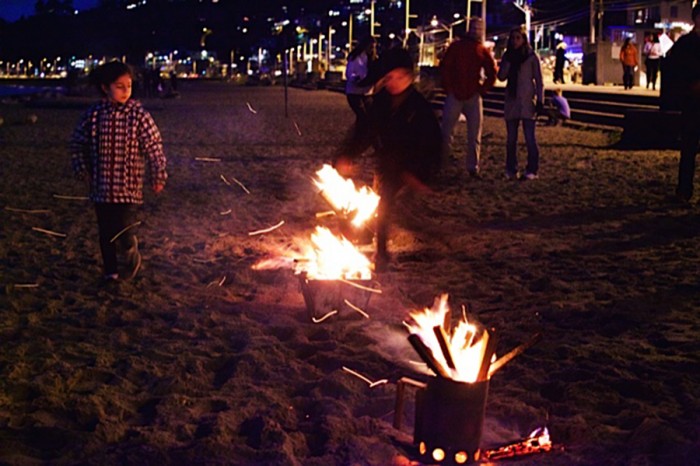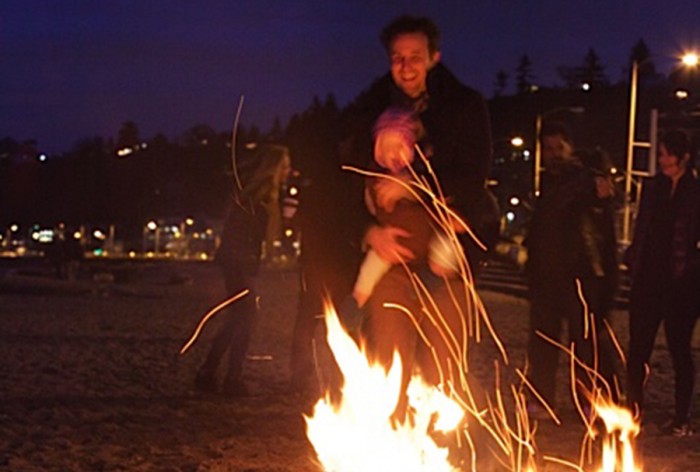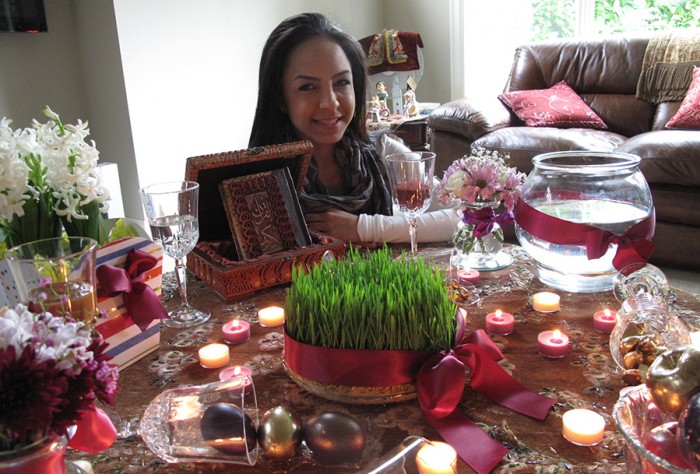
Every year around this time, joyful childhood memories ignite inside me. I see my mother gathering branches in the garden of our London home. I wrap up warm and run outside with handfuls of newspaper.
If the grass happens to be wet that year, we set up the row of at least three bonfires in the concrete side alley of our house with the branches and kindling.
“Zardi-ye man az toh; zorchi ye-toh beh man [“I give you my yellow (sickly pallor); you give me your red (vitality)”],” we chant into the fire in Farsi as we begin jumping over the burning flames one after the other. Again and again we chant until our souls are renewed, and we only smell ash.
Chaharshanbeh Suri (“the night of jumping the fire”) is a cleansing ritual which opens the Nowruz celebrations on the eve of the Wednesday before Spring Equinox, to usher in the “new day,” or new year marked by the beginning of spring.
Although I grew up in London, England, my mother is Iranian and worked for the National Bank of Iran in the city for 18 years. I was always surrounded by a large Persian community, including my aunts, cousins and grandparents who lived nearby.
Joining Iranian families across the world, Seattle’s sizable Iranian community marks March 17 through April 5 with the same Nowruz traditions I celebrated growing up.
Originally a Zoroastrian ritual to commemorate the coming of Spring and beginning of a new year, Nowruz has been celebrated in Iran for 3,000 years and persists as the most important and ceremonial holiday of the year, despite significant resistance from the ruling Islamic regime.
In 2009, President Obama used the occasion to offer diplomatic relations with Iran and recognize the contributions of the 500,000-strong American Iranian population. He ended with: “Ayd- e shome mobarak” (“Happy New Year” in Farsi). Every year since then, he has televised messages, and this year, the White House held official celebrations inaugurated by First Lady Michelle Obama, where guests enjoyed Persian food and dancing.
In West Seattle, I excitedly took my husband and 11-month-old daughter down to Alki Beach for Chaharshanbeh Suri on Tuesday, March 17 to jump the fires with around 60 others from the Seattle Iranian community.

“I want to make sure my two daughters, Melina and Sophia, learn these rituals so they can also teach their children,” said one of the attendees Amir Rezavan.
Following Chaharshanbeh Suri, Iranian families across the world prepare their houses with Haft Sins, symbolic table spreads of ornaments and objects to bring good luck, eating herbed rice and fish to usher in the New Year (1394 in Iran).
The Haft Sin is the Zoroastrian equivalent of a Christmas tree. Growing the Sabzeh (sprouted wheat germ), symbolizing rebirth, begins the week before. Then Samanu (sweet pudding) for affluence; Senjed (wild olive fruit) for love; Sir (garlic) for medicine; Sib (apple) for beauty and wealth; Somaq (Sumac fruit) for the sunrise and Serkeh (vinegar) for old age.
That makes seven, but tables often abound with Symbol (hyacinth) for the coming of spring, Sekkeh (coins) for wealth and a bowl of goldfish to symbolize life. Other non-“S” items should also be present: a mirror for self-reflection; candles for enlightenment and happiness; decorated eggs for fertility; rose water for its cleansing power and a holy or poetry book.
Last March, my family and I were still unpacking boxes from a move from London, when my aunt arrived. She insisted my grandmother would turn in her grave if we brought her great-granddaughter, due in April, into a house not blessed by a Haft Sin that year.
So we drove to Home Depot and bought 27 pots of Hyacinths just for starters!

Twenty-six-year-old Mahta Ahmadnia has been an active community organizer since she arrived in Seattle from Iran 13 years ago. First as president of the University of Washington’s (UW’s) Persian Circle from 2007 to 2011, then as an active volunteer turned board member of the Iranian American Community Alliance from 2011 to now, she loves honoring and living her culture.
“Nowruz is big. It is similar to Thanksgiving. As an Iranian-American, … I have become more attached to it since coming here,” she says while lighting her Haft Sin candles at her aunt’s Kirkland home. “The one year I didn’t do Haft Sin, I felt depressed, like something was missing.”
At the UW, current president of the Persian Circle, Ameen Tabatabai, is gearing up for a sold-out Nowruz party for this Saturday night.
He says the interest in these events is high, with at least 20 percent of attendees being non-Iranians.
“This year we sold out — over 200 tickets — a week before the event. Between 400 and 500 people wanted to come.”
On the thirteenth day, the holiday period ends with Sizedah-bedar, when Iranians embed their connection with the new season by spending the day picnicking in nature.
In Seattle, that means heading to Lake Sammamish Park, where they also throw their Haft Sin wheatgrass down the river for good luck.
“It’s exciting,… but halfway through the day… it makes me feel sad because it’s heartbreaking to take the Haft Sin down when I get home, but then I.. always start to have a countdown until the next one!” smiles Ahmadnia.
Where to cap off Nowruz in Seattle:
Nowruz Gala 94 – Redmond ft. Persian cuisine, DJ Ashkan and Johnny Brown salsa dancers
When: Friday, March 27, 2015 at 7:30 p.m.
Where: Redmond Senior Center 8703 160th Avenue Northeast
Redmond, Wash. 98052
Cost: $30
Buy tickets at local Persian grocery stores and Ariana Authentic Afghan Cuisine.
Sizdah Be-dar Seattle with an outdoor ceremony and picnic
When: Sunday, April 5 at 10 a.m.
Where: Lake Sammamish State Park
2000 Northwest Sammamish Road
Issaquah, Wash. 98027
Cost: Free

